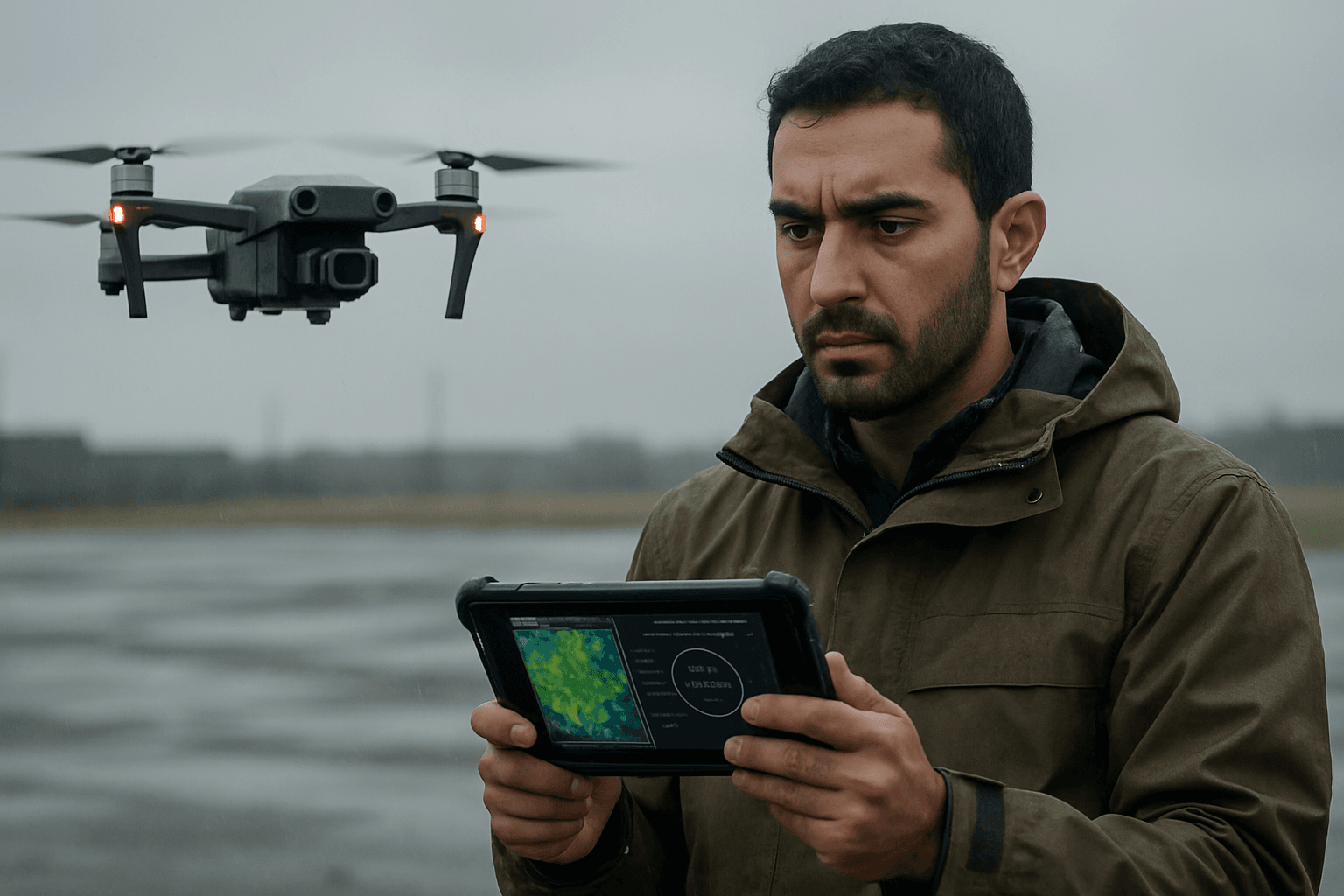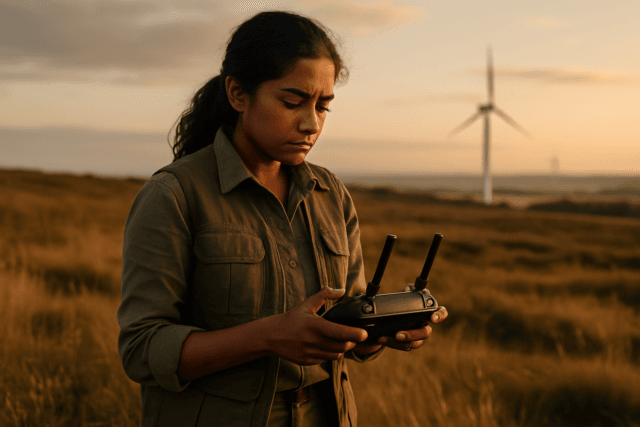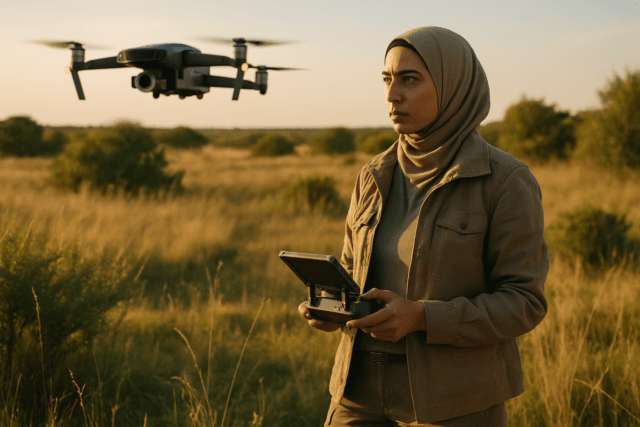In an increasingly complex world, security drones have emerged as indispensable tools, offering unparalleled aerial coverage, real-time monitoring, and cost-effective solutions for a myriad of surveillance and security needs, from perimeter patrol to emergency response. However, the very environments these unmanned aerial vehicles (UAVs) are designed to monitor are often dictated by a powerful, unpredictable force: weather. The effectiveness of security drones is profoundly impacted by meteorological conditions, challenging their operational capabilities and demanding sophisticated solutions to ensure reliable performance.
The Unseen Adversary: How Weather Compromises Drone Operations
Weather conditions can significantly limit a drone’s flight stability, battery life, sensor accuracy, and overall mission success. Understanding these environmental factors is crucial for maximizing drone utility in security applications.
Wind: The Stability Disruptor
Wind is arguably the most significant weather factor affecting UAVs, posing numerous challenges to stable flight.
- Destabilization and Drift: Strong winds can destabilize drones, making it difficult to maintain a stable flight path, leading to erratic movements and potential crashes. Smaller drones or those with less powerful stabilization systems are particularly vulnerable to sudden gusts.
- Increased Energy Consumption: Drones must expend significantly more energy to counteract strong winds to maintain their position, which drastically reduces battery life and operational flight time. This can severely limit the range and duration of surveillance missions.
- Navigation and Accuracy: Wind can push drones off course, making it challenging to maintain precision in positioning and mapping tasks. Wind shear—sudden changes in wind speed or direction—can cause abrupt shifts in position, hindering automated flight paths. Microbursts, intense localized downdrafts, can lead to uncontrollable descents, making recovery nearly impossible.
- Takeoff and Landing Risks: Strong winds increase the risk of crashes during takeoff and landing, as drones may drift immediately or struggle to gain/lose altitude safely.
Precipitation (Rain & Snow): Water Damage and Obscured Vision
Rain, snow, and even high humidity present direct threats to drone hardware and sensor functionality.
- Electronic Damage: Most commercial and recreational drones are not inherently waterproof, making their sensitive electronic components vulnerable to water ingress, which can lead to malfunctions or permanent damage, including short circuits.
- Icing and Aerodynamics: Ice accumulation on the drone’s body and propellers, particularly in temperatures below -5°C and high humidity, can significantly alter aerodynamics, reduce lift, increase drag, and cause stability issues, potentially leading to catastrophic lift loss.
- Sensor and Camera Obstruction: Precipitation can obscure camera lenses and sensors, making it difficult for operators to see the surroundings and collect effective data. This directly impacts the quality of visual and thermal imaging, critical for security applications.
- Battery Performance: Moisture can also negatively impact battery performance and lifespan.
Temperature Extremes: Battery and Component Stress
Both extremely hot and cold temperatures can degrade drone performance and component longevity.
- Battery Degradation: High temperatures can cause lithium-polymer batteries to overheat, quickening chemical processes, reducing their overall lifespan, and leading to shorter flight durations. Conversely, extreme cold slows chemical reactions, reducing battery efficiency and usable capacity, resulting in shorter flight times and potentially leaving the drone stranded mid-mission. Most surveillance drones operate effectively between -10°C and 40°C.
- Component Malfunctions: Motors and other mechanical and electronic components can be affected by temperature extremes, potentially leading to reduced efficiency, stability issues, or even system shutdowns.
- Air Density Impact: Changes in temperature and atmospheric pressure affect air density. Lower air density in hot weather or at high altitudes reduces the lift generated by propellers, forcing motors to work harder, consuming more power, and increasing the risk of overheating.
Low Visibility (Fog, Mist & Haze): Navigation and Data Collection Challenges
Reduced visibility poses significant challenges to drone navigation, obstacle avoidance, and data collection, particularly for visual line-of-sight operations.
- Loss of Visual Line of Sight (VLOS): Fog, mist, and heavy rain severely reduce visibility, making it difficult for the operator to see the drone and its surroundings, increasing the risk of collisions.
- Sensor Confusion: Dense fog or precipitation can cause a drone’s sensors (including GPS, LiDAR, and IR) to miscalculate distances, mistake the fog for an obstruction or landing surface, or suffer from signal disruption.
- Compromised Data Quality: Low visibility directly hampers the effectiveness of camera-based surveillance, as the target area may be obscured or images appear darker and less clear, making analysis difficult.
- Increased Power Consumption: Denser air due to moisture in fog can require more power to maintain flight stability.
Mitigating Weather Risks: Advancements and Best Practices
To overcome these weather-related challenges, drone manufacturers and operators are increasingly adopting advanced technologies and rigorous operational protocols.
All-Weather Drone Design and Materials
Specialized “all-weather” or “weatherproof” drones are engineered with robust designs and durable materials to withstand challenging environmental conditions.
- Weather Resistance Ratings: Many surveillance drones feature Ingress Protection (IP) ratings (e.g., IP55, IP67) indicating their resistance to dust and water, allowing operation in rain or snow without losing functionality. Some models can even be submerged in water for a limited time.
- Rugged Construction: These drones utilize sealed airframes, waterproof enclosures for components, and motor/powertrain waterproofing to prevent moisture and contaminant intrusion.
- De-Icing Systems: Innovations include anti-icing systems and laser-structured heating elements for rotor blades to prevent ice accumulation, a critical hazard in cold, wet conditions.
- Aerodynamic and Structural Designs: Designs are evolving to enhance wind resistance and stability, ensuring consistent performance.
Advanced Sensor and Navigation Technologies
Improvements in sensor technology and navigation systems are key to enhancing drone effectiveness in adverse weather.
- Thermal Imaging and Night Vision: Drones equipped with thermal imaging and night vision capabilities ensure round-the-clock surveillance, even in low light or completely dark conditions.
- LiDAR and SWIR Cameras: Light Detection and Ranging (LiDAR) and Short-Wave Infrared (SWIR) cameras can penetrate fog and rain more effectively than traditional visual cameras, providing clearer environmental data and enhancing situational awareness and flight safety.
- Environment-Aware Flight Controllers: Sophisticated control systems that continuously monitor temperature, humidity, and air pressure using onboard sensors can adapt drone behavior to changing environmental conditions, optimizing motor commands and maintaining stability.
- Collision Avoidance Systems: Systems combining cameras, LiDAR, and ultrasonic devices help drones recognize and steer clear of obstacles even in reduced visibility.
Power Management and Battery Innovations
Addressing battery performance limitations in extreme weather is critical for extended missions.
- Robust Power Management Systems: Drones are built with advanced power management systems to maintain battery performance and flight time even in adverse conditions.
- Higher Energy Density Batteries: Ongoing innovations in battery technology, including lightweight materials and higher energy density batteries, are extending flight times.
- Hybrid Power Systems: Research into hybrid systems that combine batteries with fuel cells or solar panels can significantly improve operational flexibility and endurance.
Strategic Planning and Operational Protocols
Beyond technological solutions, responsible drone operation in challenging weather relies on meticulous planning and adherence to best practices.
- Pre-Flight Weather Assessment: Conducting a thorough weather check before takeoff, including current conditions and forecasts, is essential for informed decision-making. Access to current meteorological data is a critical factor for safe drone operation.
- Manufacturer Guidelines: Adhering to the manufacturer’s recommended maximum wind speeds and operational temperature ranges is paramount to avoid loss of control or damage.
- Pilot Training: Security teams must be adept at using drone technology, including understanding how different weather conditions affect their specific drone models.
- Risk Assessment: A thorough risk assessment should always precede drone deployment in bad weather, prioritizing safety and understanding the drone’s capabilities and limitations.
The Future of All-Weather Security Drones
The demand for reliable, all-weather security drones continues to drive innovation in the aerospace and technology sectors. As advancements in materials science, sensor fusion, artificial intelligence, and battery technology progress, security drones are becoming increasingly resilient to environmental challenges. Future developments promise even greater autonomy, extended operational windows, and enhanced data reliability, solidifying the UAV’s role as a cornerstone of modern security and surveillance strategies.





